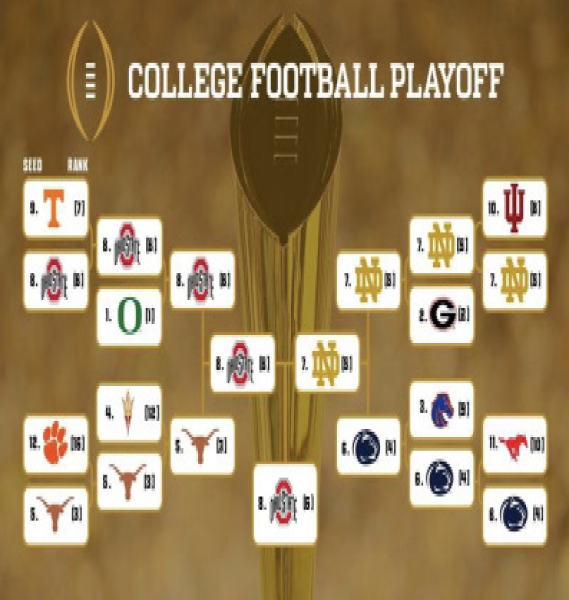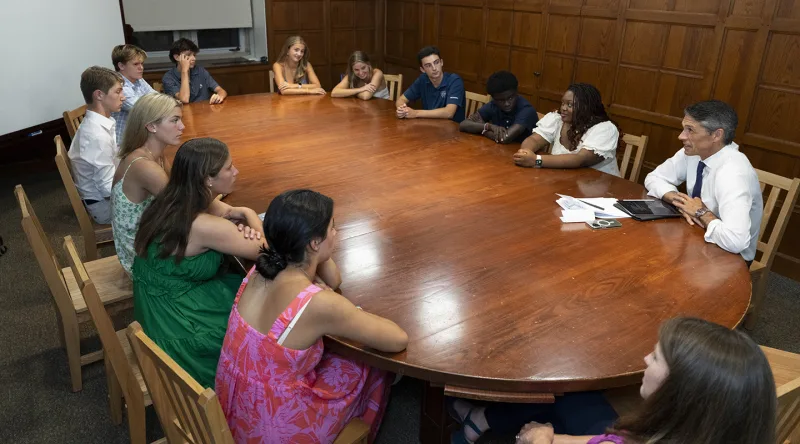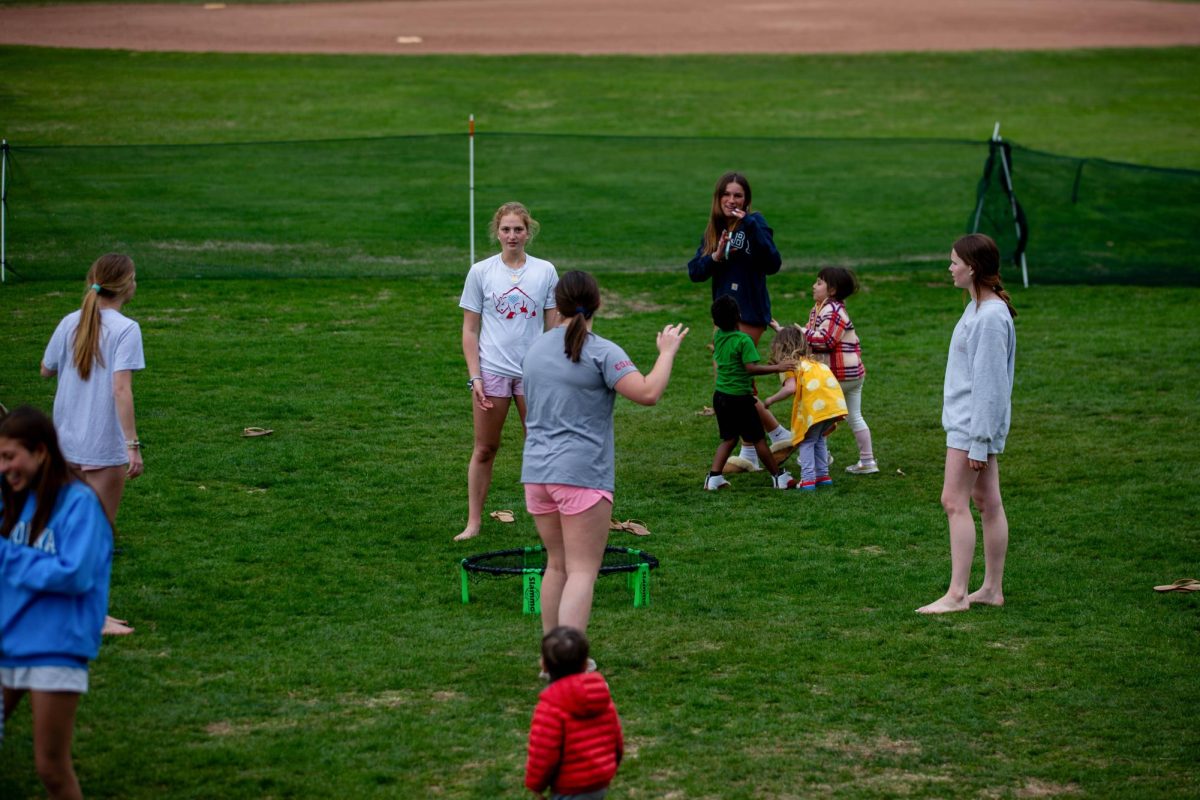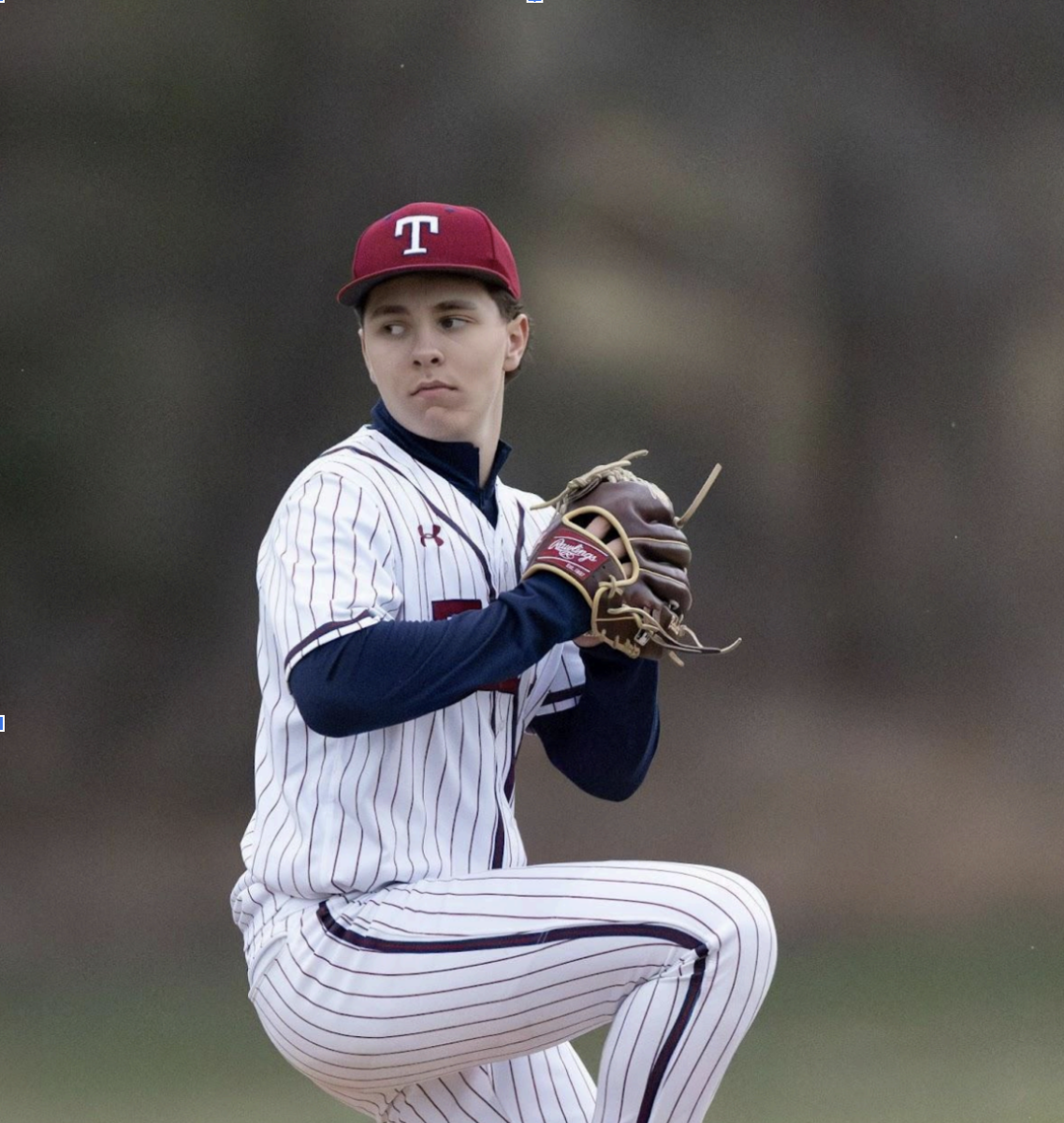For the first time ever, the College Football Playoffs featured a twelve-team playoff, transitioning away from the four-team bracket that had been in place for the past ten years. This new playoff format includes several new interesting changes. First off, four teams received first-round byes, which means they skip the first round and get an automatic bid into the second round. These went to the four highest-ranked conference champions in the FBS, the highest level of college football in the NCAA. In addition, the fifth highest-ranked conference champion is granted a bid to the playoff, and the rest of the field is made up of the remaining highest-ranked teams. This creates an interesting scenario, where an unranked team can end up in the playoffs. That would result in a team in the top twelve being pushed out of the playoffs. That scenario in which a top 12 gets pushed out of the playoff happened this year when 17th-seeded Clemson won their conference championship game and were given an automatic entrance. This caused Alabama, the 11th-ranked team, to be pushed out of the playoff. This scenario is guaranteed to repeat over the ensuing years of this format.

Secondly, this year’s college football playoff included many of the sport’s historically successful teams, such as Ohio State, Georgia, and Notre Dame. But the expanded bracket also left room for teams such as Southern Methodist University (SMU), Boise State, and Arizona State (ASU), who wouldn’t have been in the playoff conversation otherwise. The new playoff 12 team system gave these teams an opportunity to play for the championship, when previously they would not have been able to.
While there was luck involved, it would be wrong not to mention the two best players in the CFB playoff: Ashton Jeanty of Boise State and Cam Skattebo of Arizona State. Cam Skattebo had the best single-player performance in the entire playoff when Arizona State faced off against Texas in a quarter-final clash. Skattebo gave quite a performance, including throwing a touchdown pass and completing both a pass and run touchdown. He is the first person to do so in ten years and the first person to ever do it in the playoffs.
The new playoff bracket also created huge upsets, the most notable being Ohio State’s defeat of Oregon 41-21 in the quarterfinals. Oregon was the only undefeated team in the FBS this year, going 13-0, and was the unanimous “number one” team in the nation. However, Ohio State proved to be stronger, as freshman receiver Jeremiah Smith had an amazing day with two scores and 187 yards.
The semifinals of the CFB consisted of four of college football’s most successful and historically significant teams. Ohio State took on Texas in what was a thriller that came down to its final moments. With two minutes and thirteen seconds left in the game—down 21-14—Texas was on the Ohio State eight-yard line, close to the endzone. What ensued was perhaps the most memorable moment of the entire playoff: Ohio State captain and defensive end, Jack Sawyer, sacked Texas quarterback, Quinn Ewers, and returned the ball 92 yards to ice the game and bring Ohio State into the final. The other semifinal, Penn State vs. Notre Dame, went back and forth all game. However, due to a couple of critical mistakes by Penn State quarterback Drew Allar, Notre Dame was able to squeak by and head to the National Championship to face off against Ohio State.
Ohio State vs. Notre Dame proved to be an entertaining game in which OSU scored 21 unanswered points after Notre Dame scored on the opening possession of the game. The second half started similarly, as Ohio State kept scoring and padded their lead, making it 31-7. Then Notre Dame started to claw back, scoring the next 16 points and closing the gap to 31-23. Ohio State held steady and made a field goal—clinching the game. The final score was 34-23, crowning Ohio State the national champion in the inaugural 12- team playoff. Overall, it’s safe to say that the playoff structure added new, highly contested games and increased competitiveness in college football. These new rules will continue to evolve, keeping fans and teams invested in each and every game they play.


























